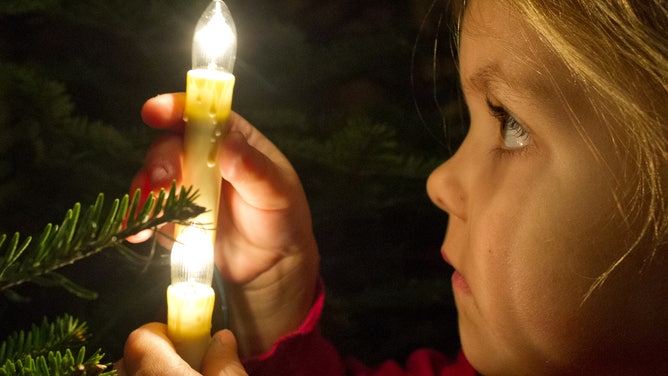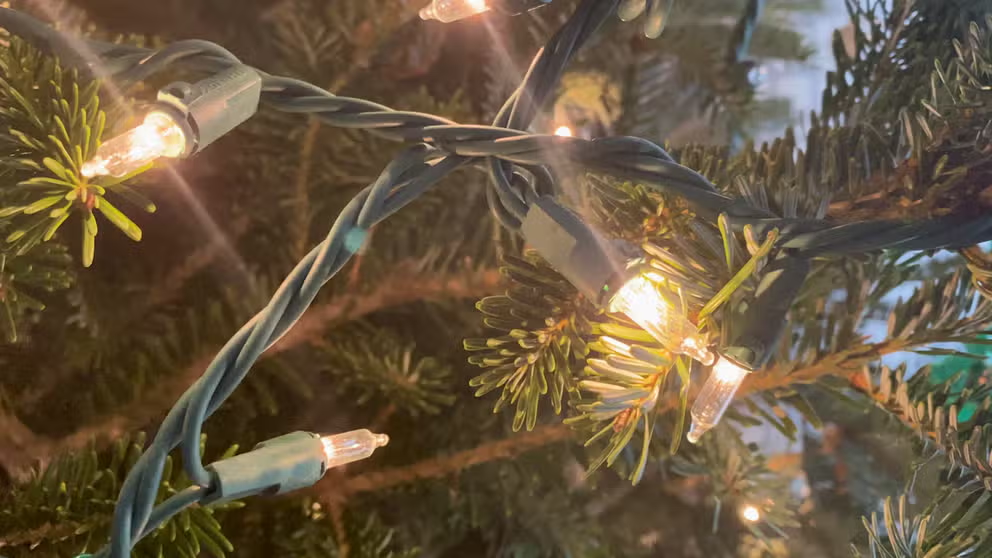Christmas tree syndrome could trigger your allergies or asthma
If you are sniffling and sneezing at home, it may be your Christmas tree.
Christmas Lights - Edward Johnson's Bright Idea
Christmas lights bring joy to millions every year, but where did they come from?
You might think that’s Jack Frost nipping at your nose, but it could actually be a sign of Christmas tree syndrome.
Anyone who may experience a sudden allergic reaction once those Christmas trees enter the home could be experiencing Christmas tree syndrome.
The cause of this allergic reaction can spawn from real trees, artificial trees and even decorations.
WHAT YOU NEED TO KNOW IF YOU PLAN TO CUT DOWN YOUR OWN CHRISTMAS TREE

File: Decorating the tree in Cambridge, Massachusetts.
(Pat Greenhouse/The Boston Globe / FOX Weather)
The syndrome isn’t necessarily triggered by the actual tree or decorations themselves but from the dust, pollen or mold that sticks to them.
A study conducted in 2011 found that small samples from real Christmas trees showed there were about 50 different types of mold on them, many of which caused hayfever-like symptoms, according to the American Christmas Tree Association.
Depending on how severe your allergies are, it may simply be an annoyance. But, for those who may suffer from severe allergies or asthma, it could turn into a real medical emergency.
To avoid the sniffling and sneezing this holiday, here are some preventative measures to take when decorating your home.
TIPS TO SAFELY GET YOUR CHRISTMAS TREE HOME

File: A little girl holds electric lights in the shape of candles while decorating a Christmas tree.
(Patrick Pleul / picture alliance / Getty Images)
Clean your tree
If you're electing to buy a real tree this year and know you have allergies, be sure to hose it down before bringing it into the house.
Rinsing the tree will help wash off any allergens, according to the National Asthma Council of Australia.
If you still experience allergy or asthma symptoms after hosing down your tree, it’s best to move it outside.

File: Hugo Boxer 7, held the family Christmas tree on the roof of the car at Hansen Tree Farm Sunday December 04,2016 in Ramsey MN. ] The family picked out a seven feet Balsam Fir.
(Jerry Holt/Star Tribune / Getty Images)
Artificial trees
Unfortunately, fake trees aren’t allergen-proof.
Be sure to give your artificial tree a good shake outside before setting it up. The same goes for your other decorations.
Even if they’ve been sitting in a box somewhere in the attic, garage or closet, wiping down your decorations can reduce your chances of experiencing allergic reactions.
WHAT ARE THE ODDS OF A WHITE CHRISTMAS?

File: Shoppers walk past artificial Christmas trees on display at a Home Depot.
(Joe Raedle / Getty Images)
Consider a non-allergenic tree
Pine allergies aren’t very common, but they do exist, according to UCLA Health.
So if you’re dead-set on having a real tree this holiday, consider a non-allergenic alternative such as the Leyland Cypress tree. This tree is considered a "sterile hybrid tree" and does not produce any pollen, UCLA Health said.
This type of tree is unfortunately, not very common so, if you elect to do this, you might need to do some searching.
HOW ‘WHITE CHRISTMAS’ BECAME AN ICONIC HOLIDAY SONG

File: Discarded wrapping from opened presents surround a Christmas tree on December 25, 2021 in a home in Brooklyn, New York.
(Andrew Lichtenstein/Corbis)
Properly store your tree and decorations
Once the holidays are over, make sure to properly store them where they can’t accumulate any allergens.
Using plastic coverings such as bubble wrap or even vacuum-sealed bags could make all the difference when it comes to preventing allergens from sticking to your decorations and tree.
